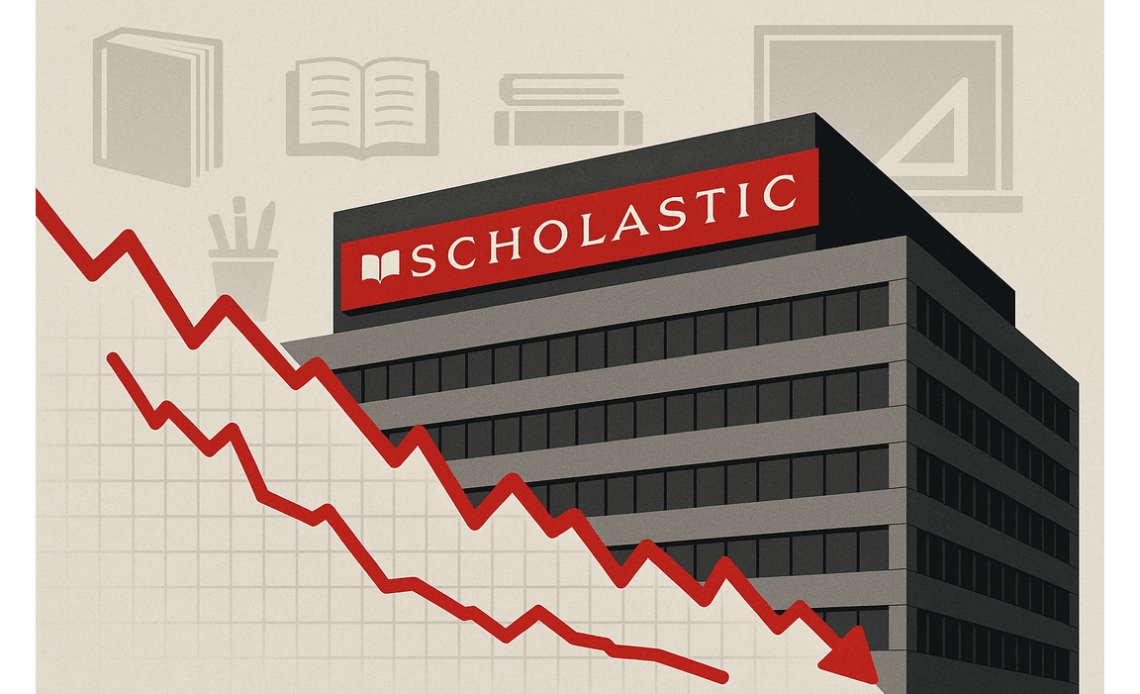
Shares of educational publishing and media company Scholastic (NASDAQ: SCHL) fell sharply on Friday, dropping 13.6% after the company reported weaker-than-expected first-quarter results.
The performance missed Wall Street’s estimates on both revenue and earnings, overshadowing otherwise stable guidance and segmental growth in some areas.
Revenue and earnings miss weigh on sentiment
Scholastic posted revenue of $225.6 million for the quarter, representing a 4.9% year-over-year decline.
The result fell short of analyst expectations and reflected broad weakness across some of the company’s core business lines.
Adjusted loss per share widened to $2.52, missing both consensus forecasts and the prior year’s performance.
The company’s profitability also deteriorated, with operating margins contracting and cash burn increasing significantly compared to the same quarter last year.
While Scholastic exceeded expectations for adjusted EBITDA and provided full-year guidance slightly above market projections, these positives were not enough to offset the disappointment in top- and bottom-line performance.
Business segment performance
The decline in overall revenue was driven primarily by weakness in Scholastic’s Education Solutions unit, which fell 28% to $40.1 million.
Management attributed the decline to lower demand for supplemental curriculum materials and the timing of state program revenues.
The weakness underscores broader uncertainty in school district funding, as districts prioritize essential purchases amid concerns about future budget availability.
Entertainment Solutions also underperformed, with revenue dropping 18% to $13.6 million.
In contrast, Scholastic’s Children’s Book Publishing & Distribution division posted a 4% year-over-year increase to $109.4 million, buoyed by ongoing consumer demand.
The International segment also recorded growth of 4%, reaching $59.4 million.
Despite near-term challenges, Scholastic reaffirmed its full-year fiscal 2026 guidance, projecting revenue growth of 2% to 4% and adjusted EBITDA between $160 million and $170 million.
Management highlighted the importance of the spring season, when stronger results are expected to materialize, making the second half of the fiscal year a crucial period for the company.
Market reaction and broader outlook
The weak quarter triggered a pronounced market response, with shares sliding 13.6% to $23.80.
The negative reaction follows a more optimistic market tone earlier this month, when Scholastic gained 5% after receiving a positive consensus rating from Wall Street analysts.
The company currently holds a “Buy” consensus rating from three financial analysts, signaling confidence in its longer-term growth potential despite near-term volatility.
Year to date, Scholastic shares remain up 15.3%, though the stock is currently 25.7% below its 52-week high of $32.04 set in September 2024.
The challenges facing Scholastic mirror broader headwinds for education-focused providers such as Wiley John & Sons (NYSE: WLY) and Pearson (NYSE: PSO), both of which also operate in the supplemental curriculum market.
With school budgets under pressure, companies in the sector face ongoing uncertainty.
For Scholastic, the reaffirmed guidance suggests management remains confident in a recovery during the spring, but investors will be watching closely to see if those expectations are met.
The post Scholastic share price plunge 13% after weak first quarter results appeared first on Invezz






